Submitted by WA Contents
Alvar Aalto’s iconic AaltoSiilo project receives approval for restoration in Oulu
Finland Architecture News - Jun 22, 2023 - 12:42 3840 views
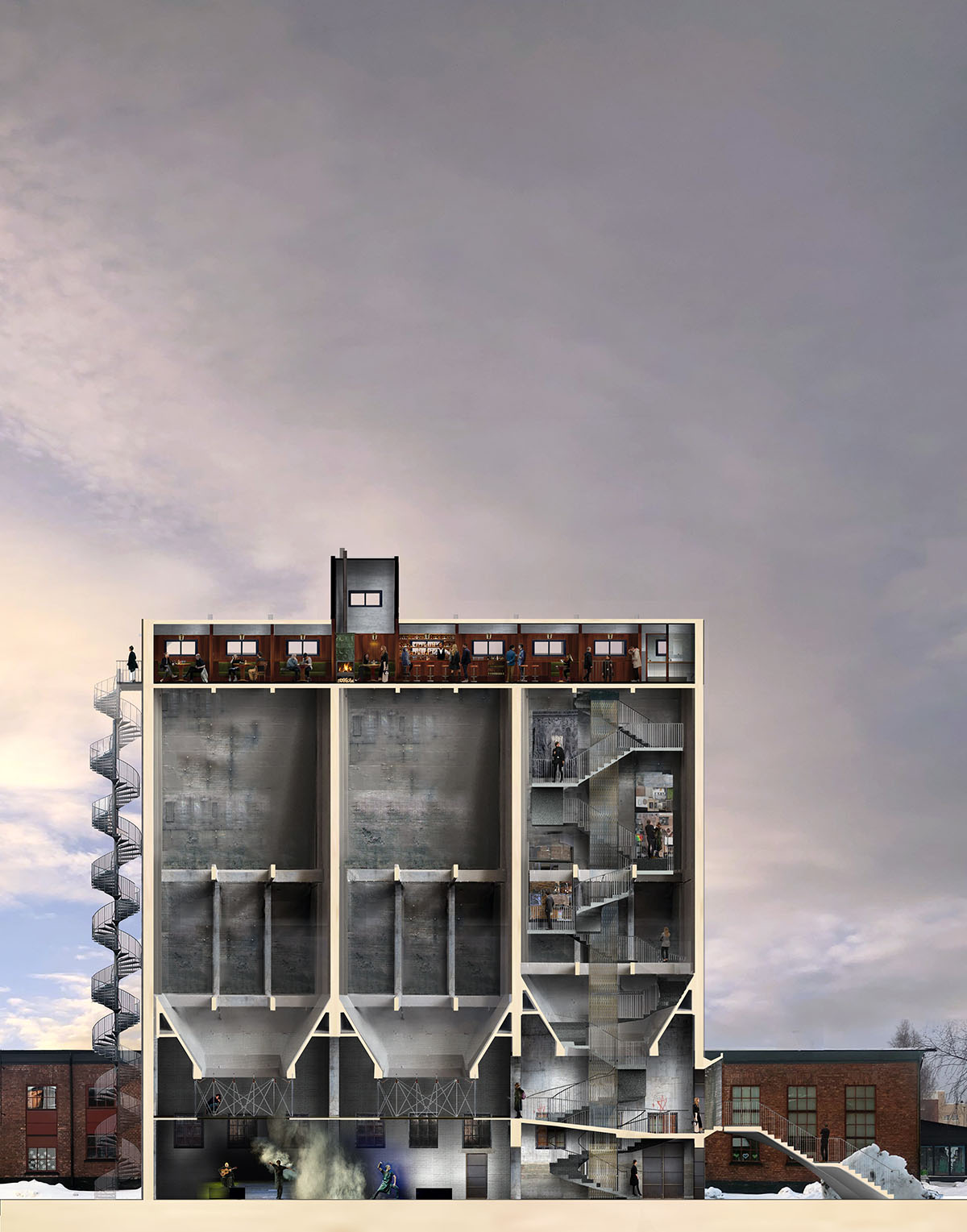
London and Madrid-based architecture studio Skene Catling de la Peña and Factum Foundation have been given permission for the restoration of the AaltoSiilo project in Oulu, Finland.
The restoration proposals, which were first annouced in March 2021, aimed to restore and reinvent the first industrial building designed by Finland’s most revered architects Alvar and Aino Marsio Aalto.
The project is set to be turned the existing 525-square-metre silo for storing woodchips into a multi-media performance, exhibition space and ‘Tar Bar’.
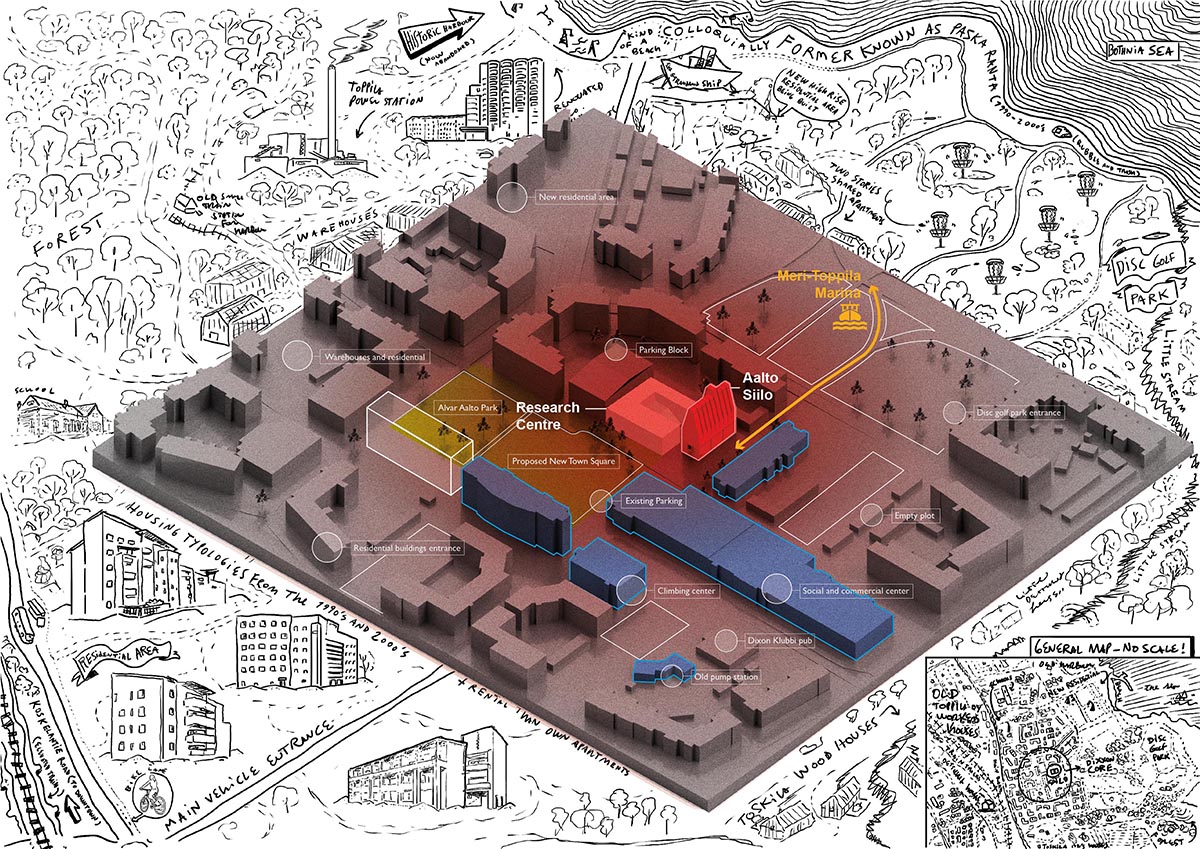
Zones of Influence - The AaltoSiilo and the new Research Lab will become the pulsing heart and first phase of the transformation of Meri Toppila. Later stages being discussed with the city Council turn the asphalt car park into a public garden, activating the other empty plots around this space. Image © Skene Catling de la Peña
More updates and details can be found on the below on how the industrial heritage of the old building is preserved and designed in the light of climate change, while meeting today's needs.
As a result of discussions with the Oulu Planning department, the proposal is prepared to house a new 1,150-square-metre Research Lab that intends to promote the reuse of concrete spolia "waste" as an architect’s toolkit for sustainable construction.
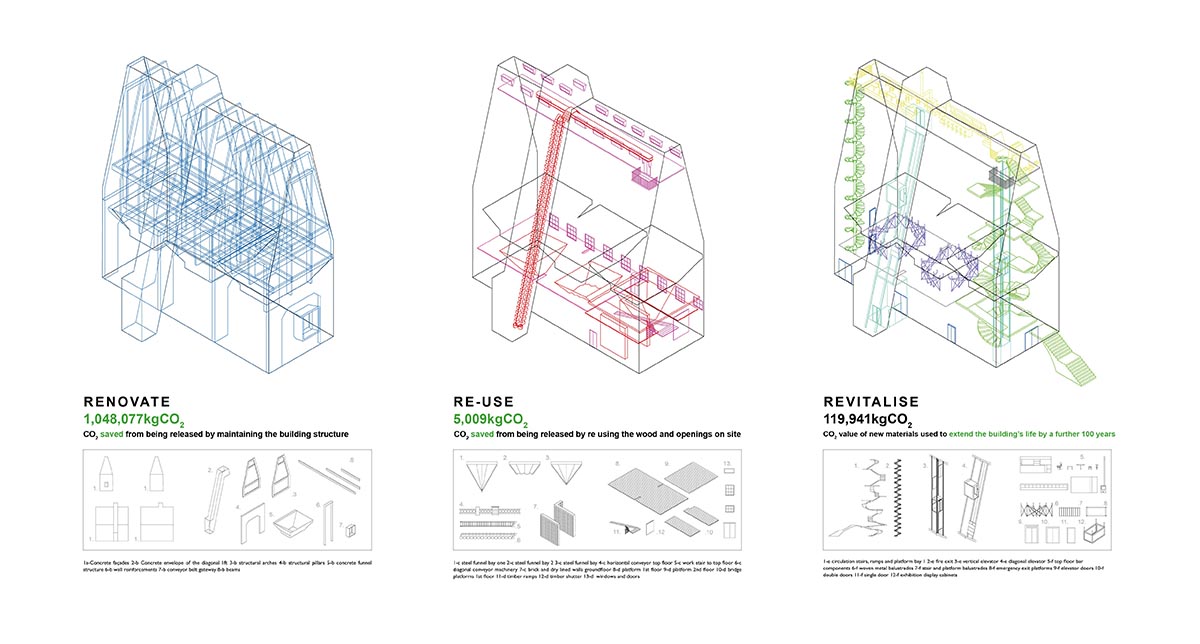
Carbon Saved - By imaginatively reusing the Aalto-designed concrete Silo, it is possible to almost entirely mitigate the new operational kgCO2 costs needed to expand the building’ s lifespan for another 100 years. The renovation of the Silo interior re-uses all the timber platforms and structures, as well as the original doors and windows. Image © Skene Catling de la Peña
"The AaltoSiilo is a concrete building of radical construction, at the cutting edge of engineering tolerance, now nearing its hundredth anniversary. The aim of the proposals is to at least double its lifespan," stated in a press release.
The iconic industrial silo is set to be built as "the only Aalto building in northern Finland accessible to the public", according to a press statement.
As the Oulu city is prepared for the European City of Culture 2026, the completion date of the AaltoSiilo and most of the Research Lab is planned to be completed in 2026. The AaltoSiilo will be Oulu’s great legacy project that will continue to enrich and evolve, as part of a new global network, long after 2026.
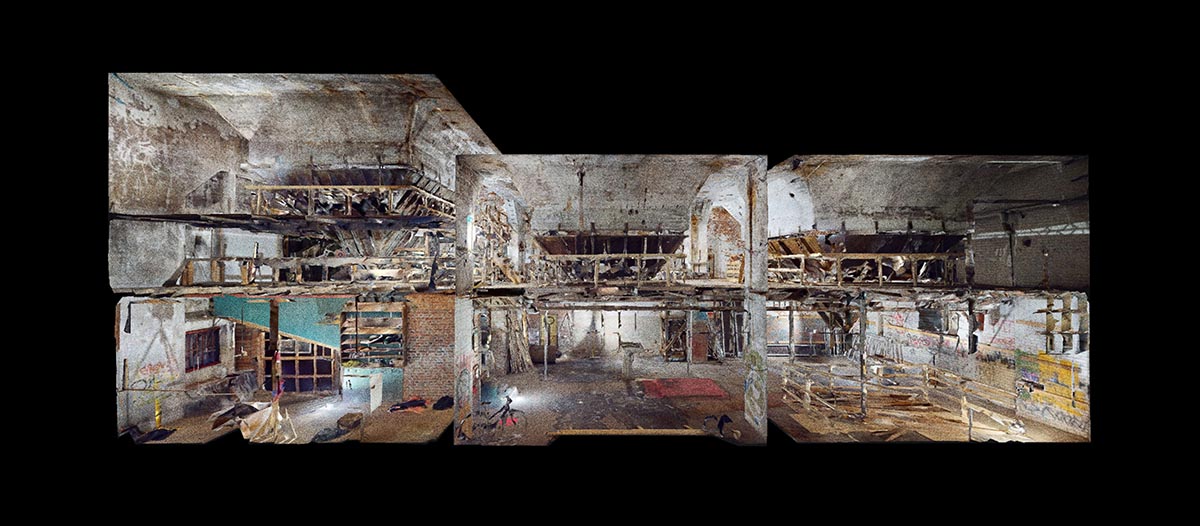
LiDAR Scan - Before any physical works, Factum Foundation for Digital Technology in Preservation made a complete recording of the inside and outside of the AaltoSiilo in its current state using LiDAR recording and high resolution photogrammetry. The building can now be explored in detail remotely. The recorded data is freely accessible to the public for all non-commercial uses. Image © Skene Catling de la Peña
The existing AaltoSiilo is a radical concrete construction that pushed engineering tolerances to the limit. 28-metres high, its ultra-thin, cast- in-situ, steel-reinforced concrete shell is held rigid by fins that punctuate its façade. It is close to one hundred years old and represents the dreams and priorities of the modernists at the beginning of the 20th century.
It can also be used to reveal how much priorities have changed in the 21st century. Meri Toppila is a neglected suburb of Oulu just below the Arctic Circle - the frontline of climate change.
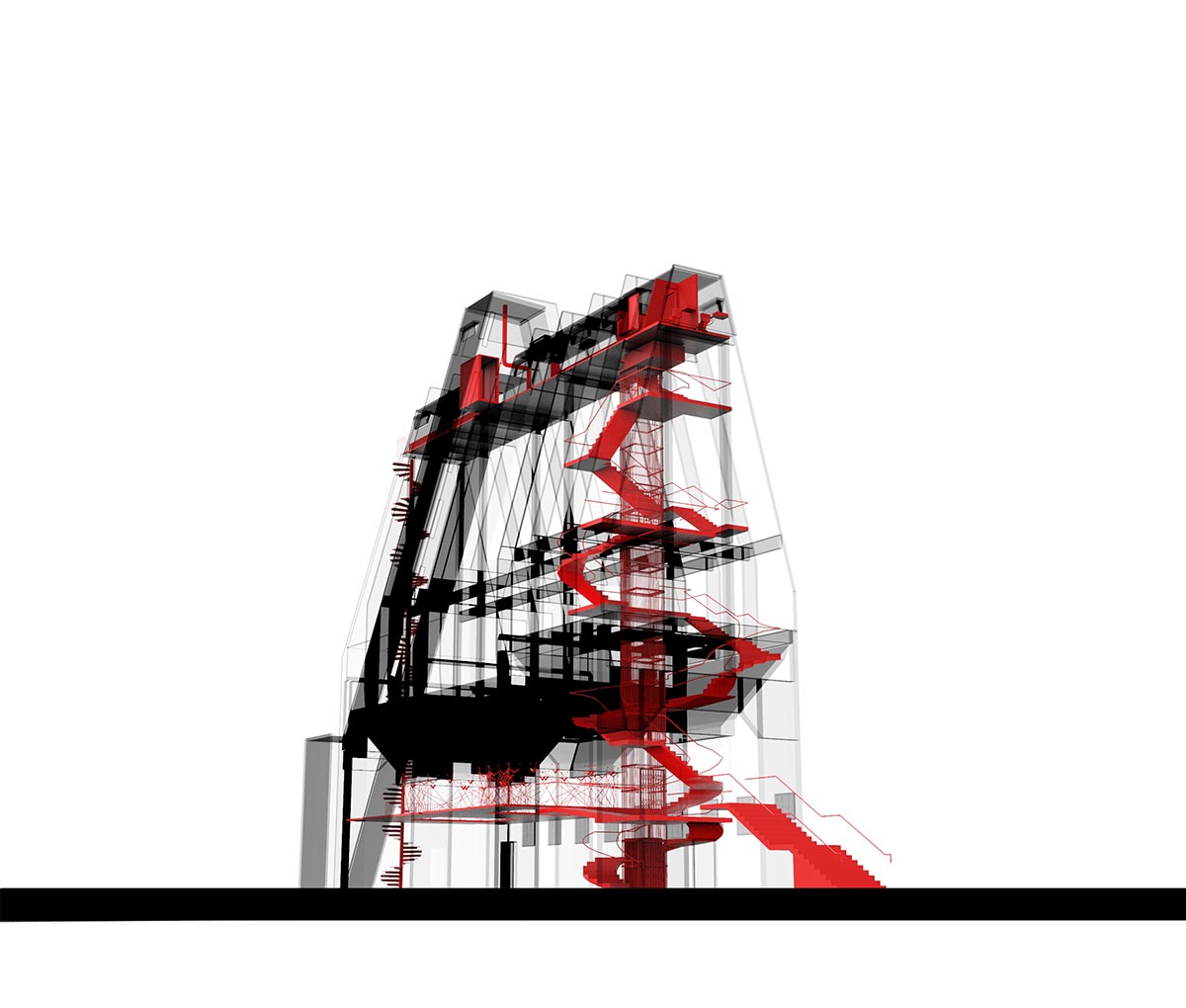
Integration of Old and New - AaltoSiilo showing the incline elevator access to the rooftop Tar Bar, the Sculptural Stair, the Mezzanine Viewing Platform and the Main Exit Stair. Image © Skene Catling de la Peña
In urgent need of urban regeneration, its transient population includes newcomers, students and the recently divorced, with over 100 different nationalities having passed through it.
Refugees, many from Syria and Somalia, arrive as the arctic ice melts and ‘post-glacial rebound’ causes land to rise by over one centimetre a year.
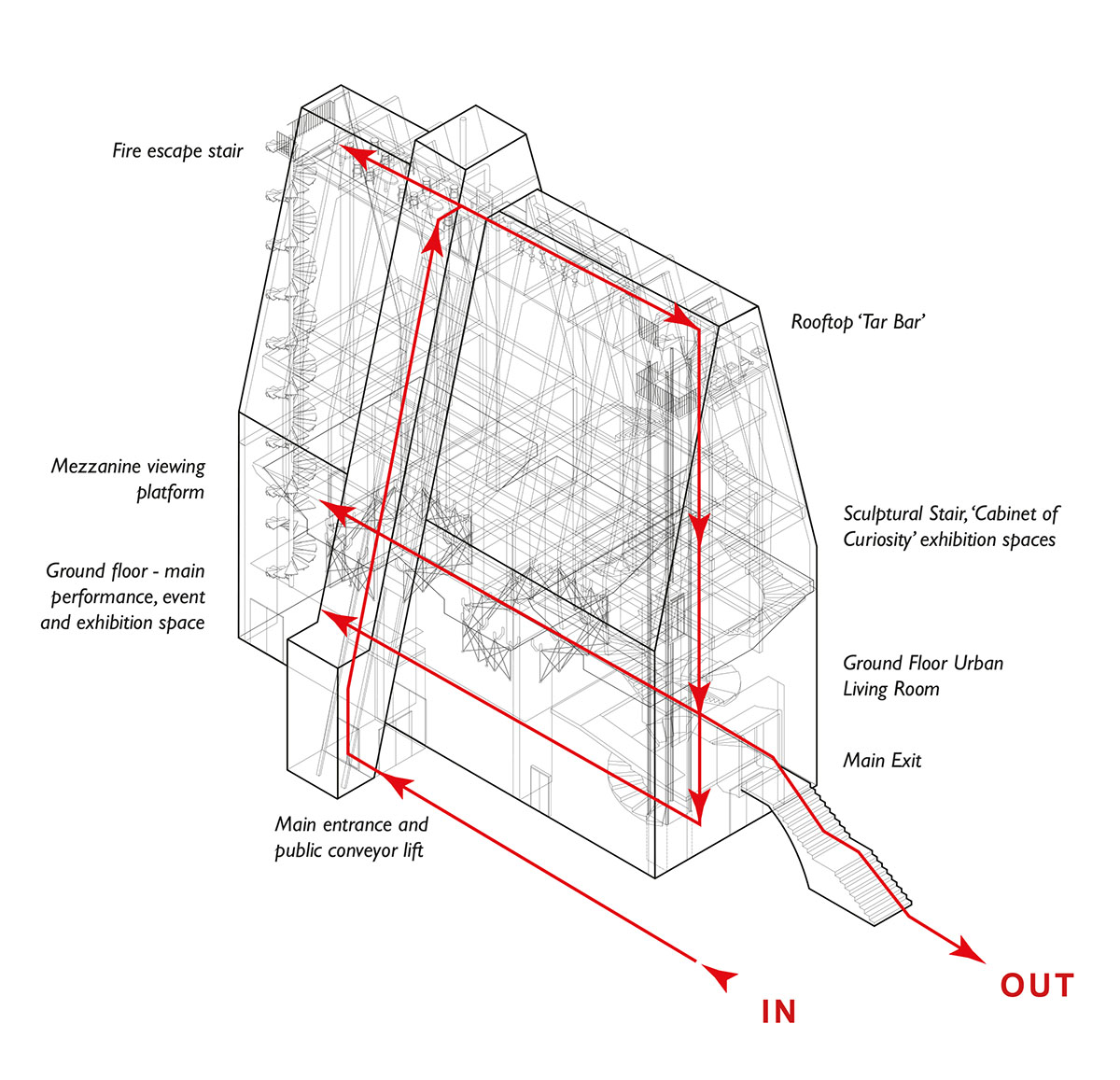
The entrance and route through the resurrected AaltoSiilo trace the historic path of the wood chips as part of the original industrial process. Image © Skene Catling de la Peña
Sustainable Construction - Carbon Saved - 933,145KGCO2
The AaltoSiilo project demonstrates the importance and viability of reusing existing concrete industrial heritage. It provides a deconstruction methodology and structural protocol for the reuse of local concrete ‘spolia’.
The source buildings for this concrete waste have already been identified with the Oulu planning department. Building with concrete ‘spolia’ creates a new aesthetic that recalls Aalto’s Muuratsalo or ‘Experimental House’, combining innovative recycling with design excellence.
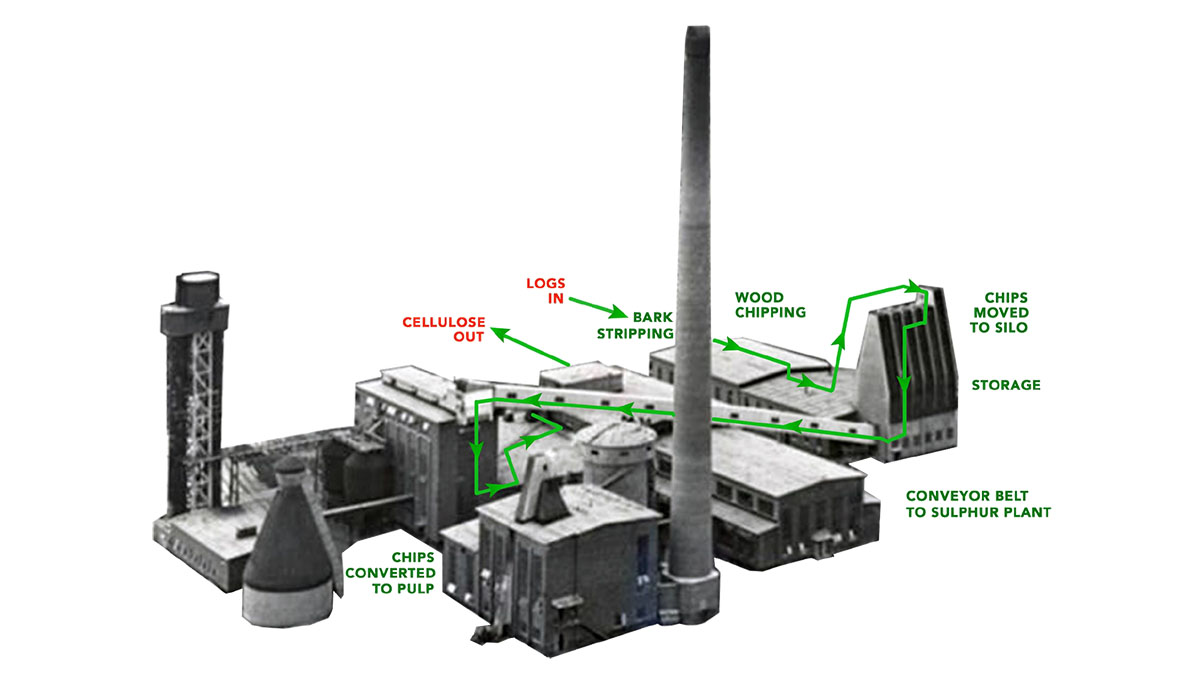
Historic route taken by logs arriving by water, through their stripping, chipping, storage and breaking down into cellulose in the sulphur plant of the working Toppila Pulp Mill. Image © Skene Catling de la Peña
The "Architect’s Toolbox" illustrates the aesthetic potential of the circular economy. Skene Catling de la Peña and Factum have also been exploring the potential of carbon sequestering concrete with the Universities of Oulu, Helsinki and Oslo.
The AaltoSiilo restoration develops a language that reveals how the building was conceived, deteriorated and repaired.
By imaginatively reusing the Aalto-designed concrete Silo, the new operational kgCO costs needed to expand the building’s lifespan for another 100 years is almost entirely mitigated. The renovation of the Silo interior re-uses all timber platforms and structures, as well as original doors and windows.

The Social Condenser and Research Lab will be developed through a phased construction. Each year, the community will witness the project progressing, with each element making a positive contribution to Meri Toppila. Image © Skene Catling de la Peña
Design for Transformation
"A central goal of the AaltoSiilo is to create a vibrant place where people want to be and interact," stated in a press release.
While the public sauna, cafe, rooftop ‘Tar Bar’ and outdoor amphitheatre provide spaces for social encounters and economic viability, the building, exhibitions and events will be a source of pride, identity, and employment, preserving cultural memory and forging a positive new identity.
"The local community will be empowered, and the transfer of knowledge and technology will create a new generation of digital artisans," a press statement added.

A protocol for the re-use of demolition spolia elements in construction. Image © Skene Catling de la Peña
The Research Lab will offer digital skills at the highest level based on Factum’s model in The Valley of the Kings, Luxor, Egypt. Here, Hassan Fathy’s mudbrick building was restored and repurposed as a 3D scanning, archiving, and training centre and is run by a fully Egyptian team.
"Factory architecture is the direct product of 19th & 20th century capitalism where industry introduced large scale buildings and complexes designed not for people, but for processes. Silos are an extreme example of this: vast structures, with no windows, built at exaggerated, inhuman scales," stated in a press release.
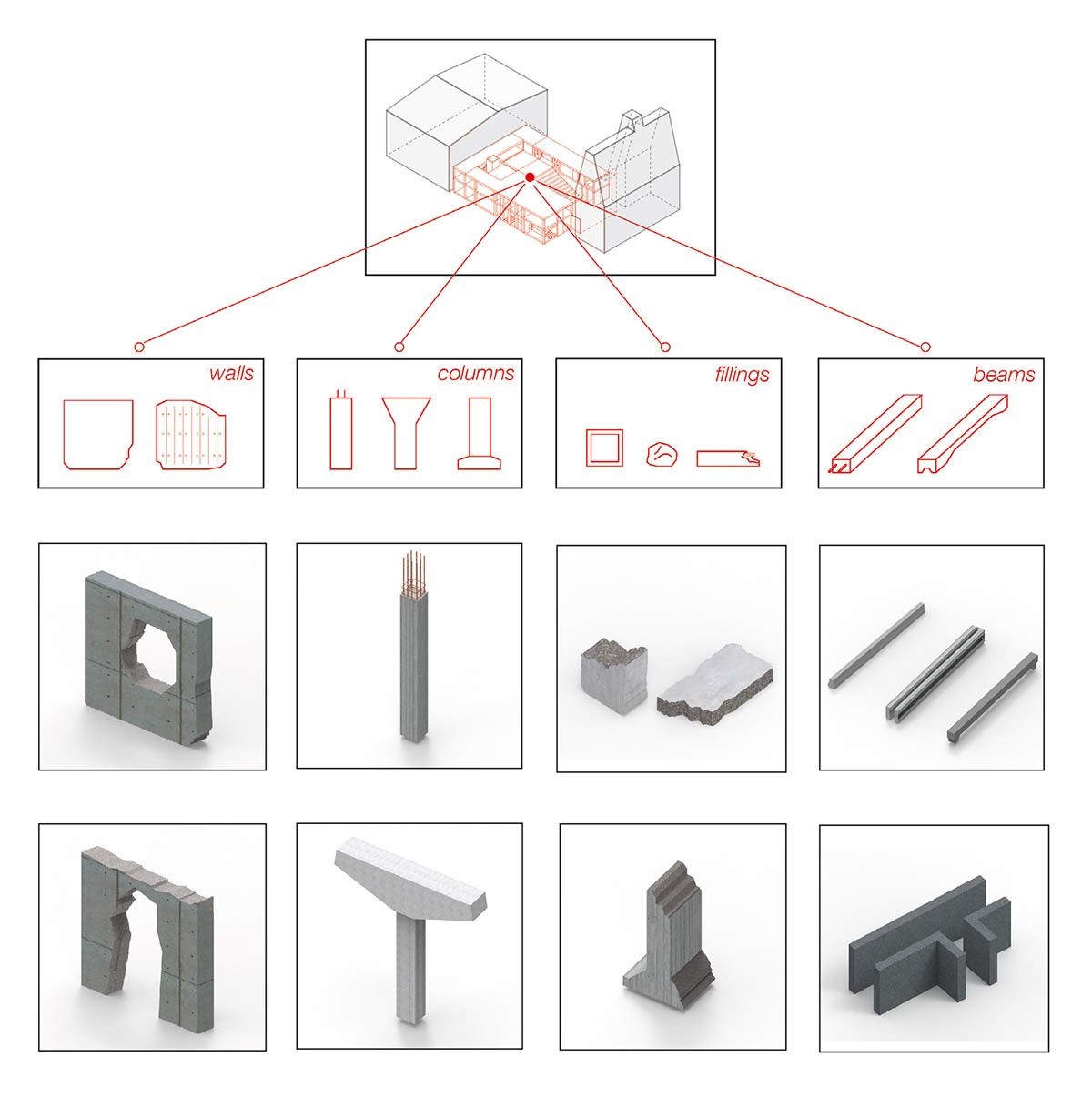
Spolia elements - walls, columns, filler pieces, and beams. Image © Skene Catling de la Peña
"The adaptation of the Silo from a structure for moving woodchips into one for people following the same route, has to literally overcome many obstacles."
"One of the most complex aspects has been the circulation; inserting a staircase through the original, unchanged, concrete structure, which has to deliver the visitor to different existing levels. Meeting stringent 21st C building regulations, disabled access, and fire risk added further challenges. The outcome is a sculptural stair that wraps around a central, structural lift and adapts itself to the building form - narrow at the top and braced with concrete beams in the centre."
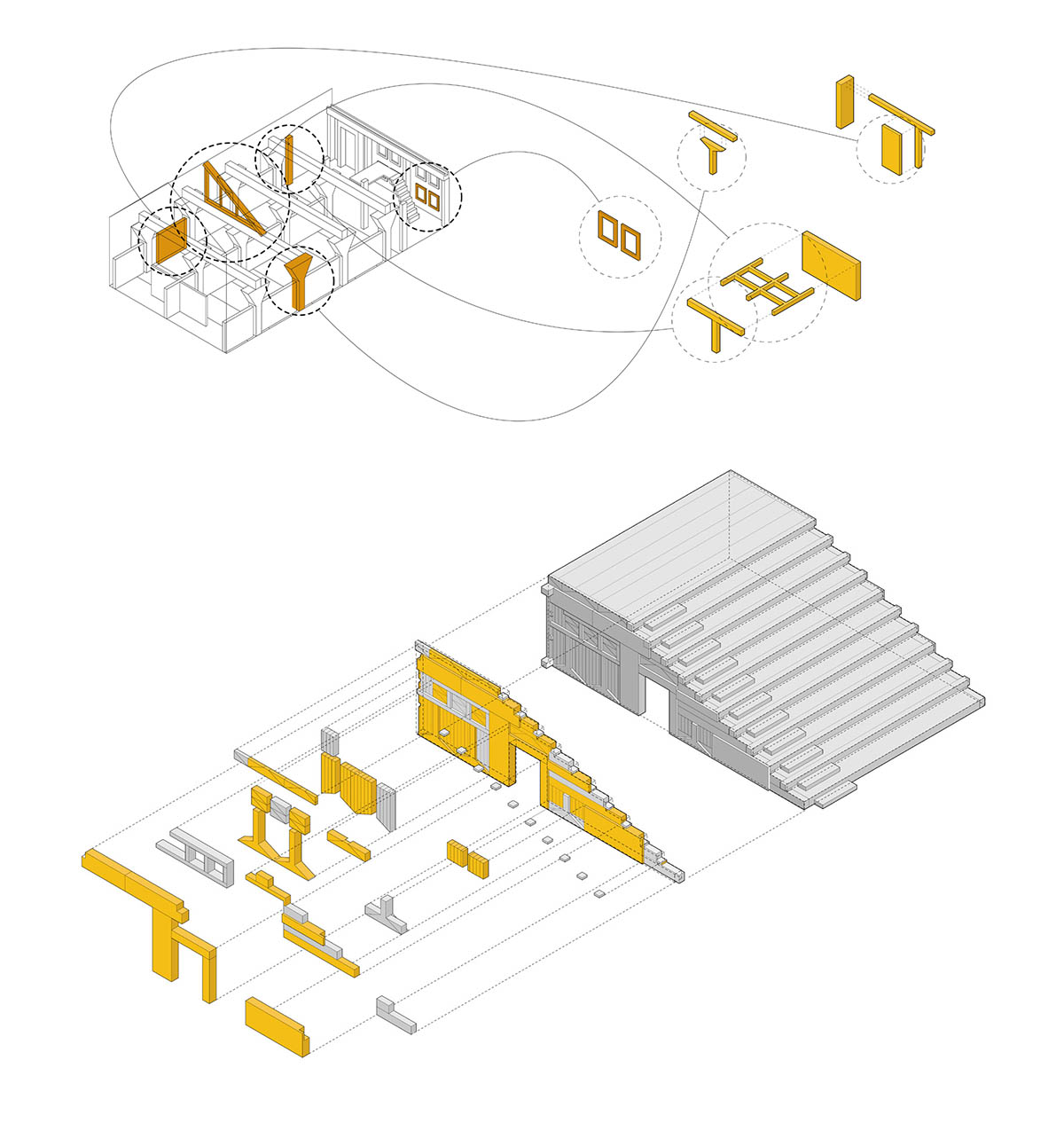
Demolition spolia elements reused in construction and Sauna and amphitheatre stairs - The second phase of building works will be constructed of spolia elements. Image © Skene Catling de la Peña
Ghost Path
The new route through the building will follow the original industrial process. The path the woodchips once took will form the basis for an ‘architectural choreography’.
The route begins at ground level where the trees were processed, it rises to the top of the building by conveyor lift as the woodchips once did, before filtering down around the structure through a ‘Cabinet of Curiosity’ arranged on platforms along the stair route, passing through the concrete hopper and exiting from the opening that once connected the Silo to the next stage of the cellulose production. This ‘ghost path’ means each visitor will re-enact the route of the industrial process.
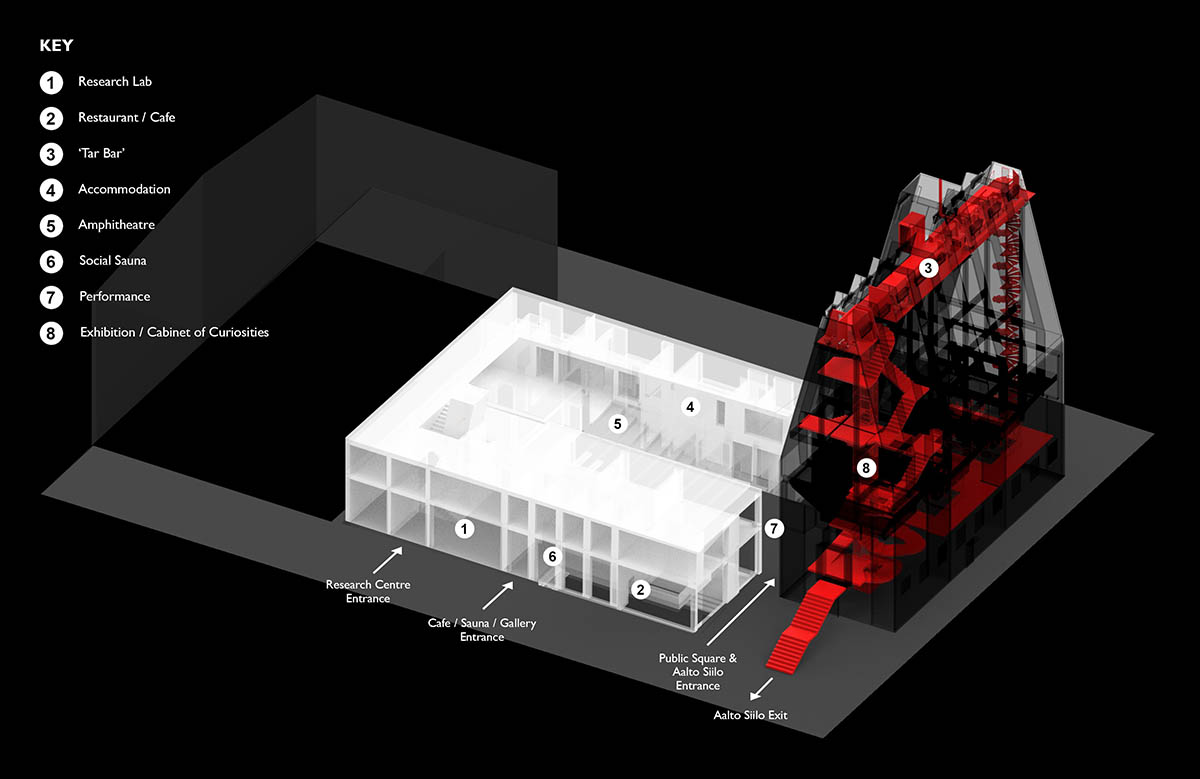
The Social Condenser will celebrate art, science and technology in a genuinely ‘polytechnic’ environment. The aim will be to merge the sustainable preservation of both the natural and the cultural environment. Image © Skene Catling de la Peña
In Meri Toppila, the Silo is used to critique itself. The restoration retains the complexities of the building: its past from a very different time in Finland, its present as an evocative ruin, and its future, as a beacon of sustainability.
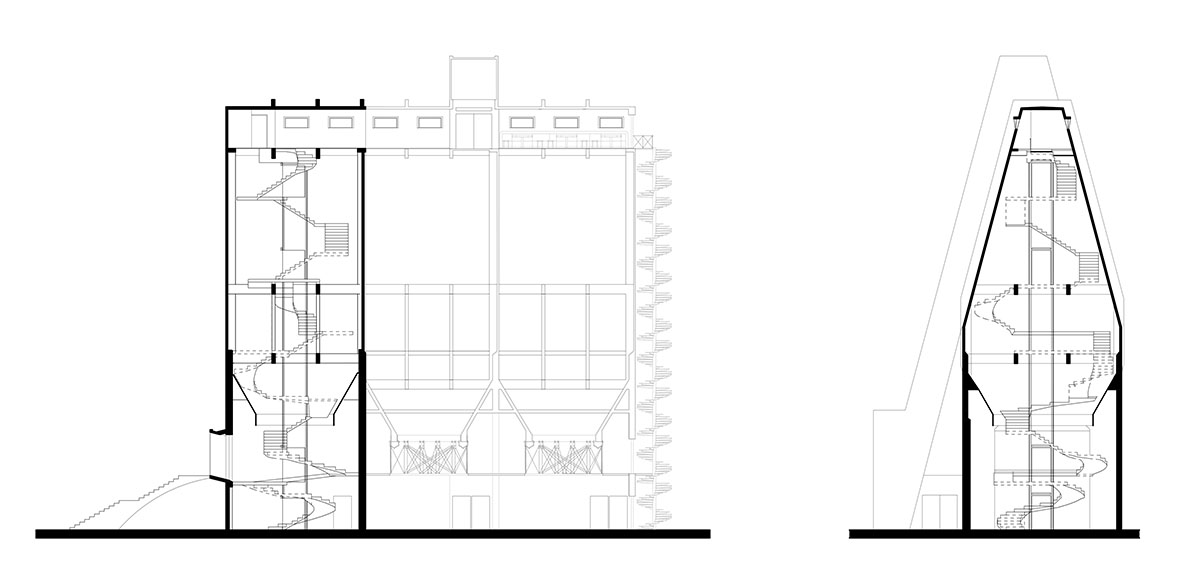
The drama of the Silo building is celebrated through the stair that weaves its way through and around the existing, unchanged structure. The stair takes a different form at each turn, echoing the form of the building that contains it. Image © Skene Catling de la Peña
Material Resonance
Material choices add another layer of resonance to the ‘ghost route’ of the former industrial process.
The ‘Toppila Oy’ was a plant that turned trees into cellulose using sulphuric acid and other corrosive chemicals: a place once destructive and wasteful of resources, becomes an exemplar for imaginative sustainability. The restoration uses all possibilities inherent in pine tar, timber and cellulose, to resonate with the building’s former use.
Pine tar from renewable sources will waterproof the roof rather than fossil-fuel based bitumen. Existing timber structures are reused in-situ or recycled to form new spaces, while CLT and Hempcrete sourced locally will be used for the internal skin of parts of the new Research Laboratory to reduce carbon emissions.
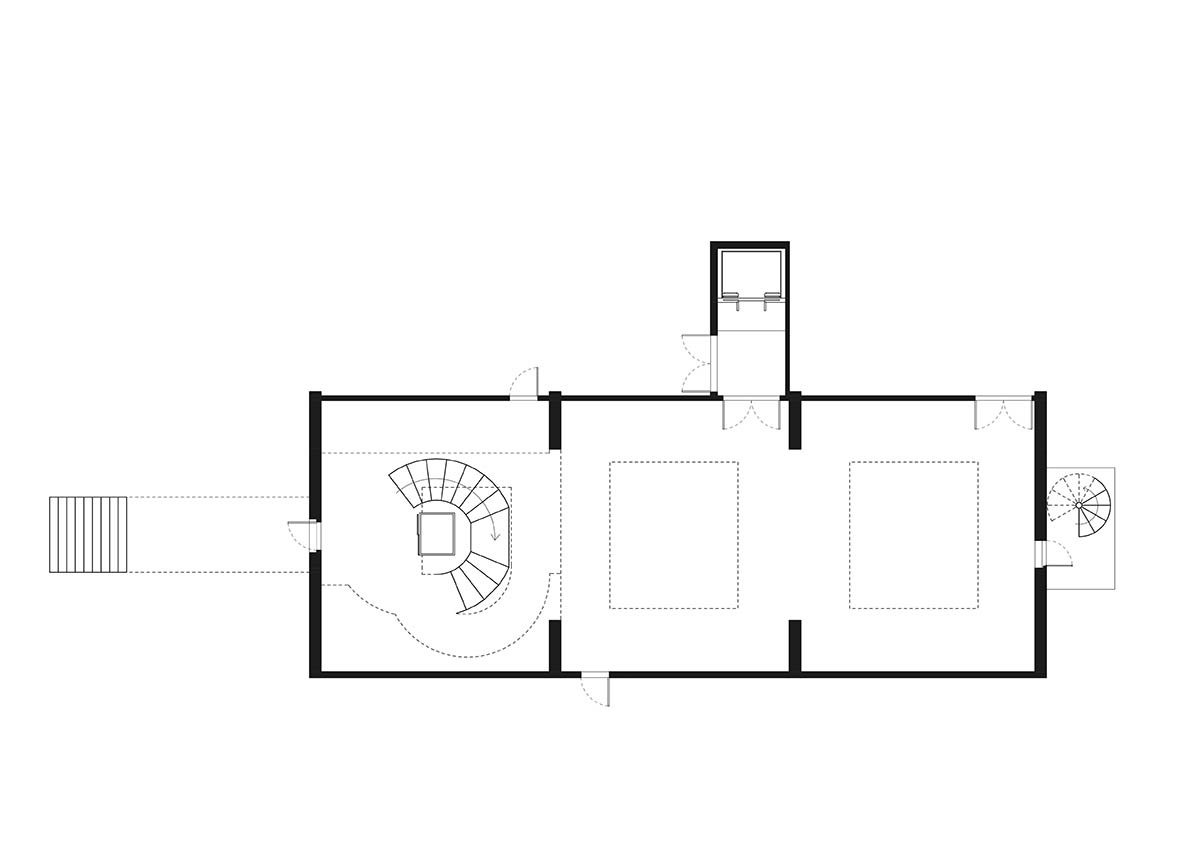
Ground Floor performance, exhibition and event space and Urban Living Room. Image © Skene Catling de la Peña
Cellulose nanofibers from wood pulp are now being used to make a clear gel that can be sandwiched between existing windowpanes to make them as insulating as walls.
The AaltoSiilo and Skene Catling de la Peña are now in discussions with engineering company KONE around the public incline elevator. The AaltoSiilo is hoping to establish creative collaborations with industry partners in Finland that have direct historic links with the AaltoSiilo.
Stora Enso, a leading provider of renewable products, and Nokia are other potential partners who have resonant connections; Stora Enso is still producing wood, CLT and cellulose products in the important Aalto-designed Sunila Factory, and Nokia, with its historic ties to Oulu, works at the forefront of digital technologies, as does Factum Foundation. The Tar Bar and restaurant will become a showcase for Finnish design, old and new.
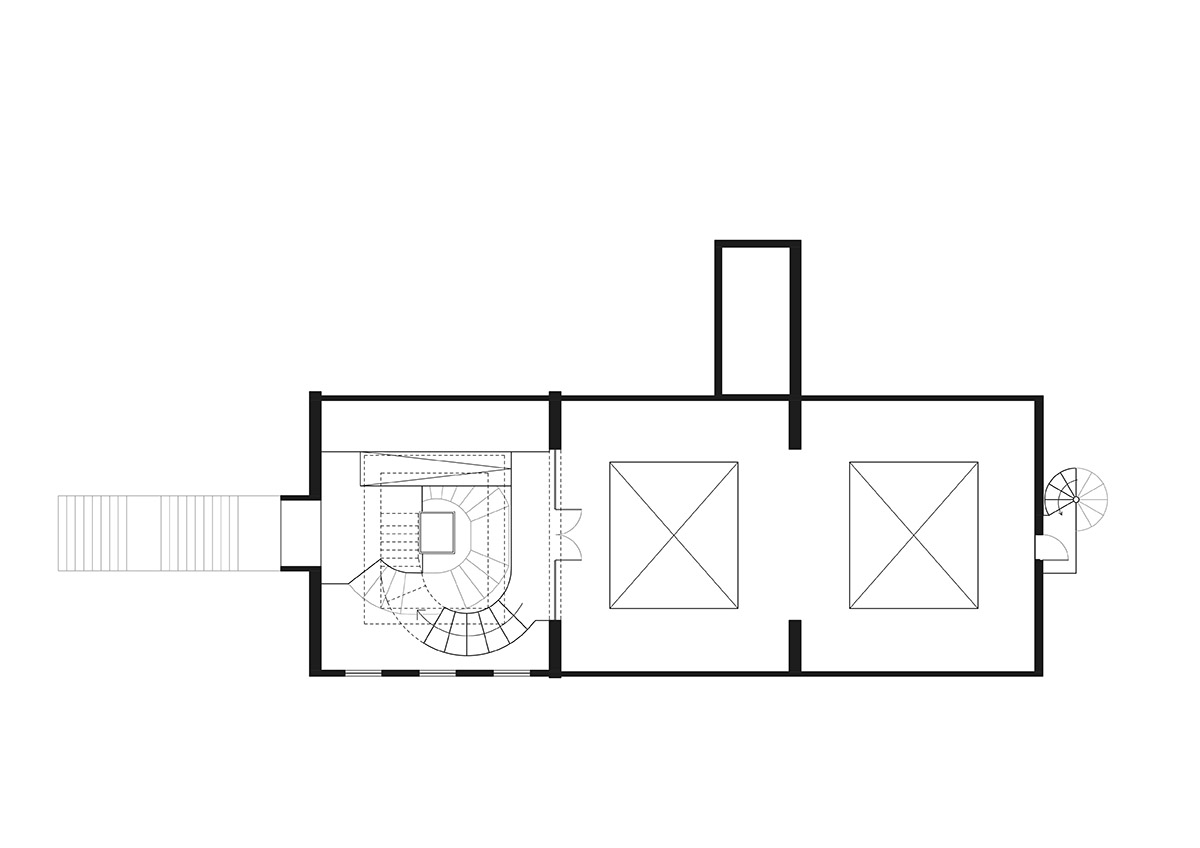
Mezzanine viewing platform. Image © Skene Catling de la Peña
The Research Lab will bring a warm heart
The Research Lab, a ‘Frankenstein construction’ or ‘Franken-architecture’, will be built from stitched-together pieces of ‘dead’ and demolished concrete buildings, it encloses a Silo-shaped void, three squares of 10x10 metres.
Rather than electricity, it will have a sauna at its centre to reanimate it and bring it to life: "a warm heart".
The new diagonal Silo elevator is sited in an intimate, lively public space for the community. Amphitheatre stairs, leading to a raised planted courtyard, direct attention back towards the silo.
The stairs double as seating for outdoor screenings and performances with the newly renovated silo becoming a projection surface.
Finland is still considered the heartland of sauna culture with a deep-rooted desire to protect the sanctity of traditions and spiritual dimension of sauna. "Despite this, the AaltoSauna will be the only public sauna in Oulu."
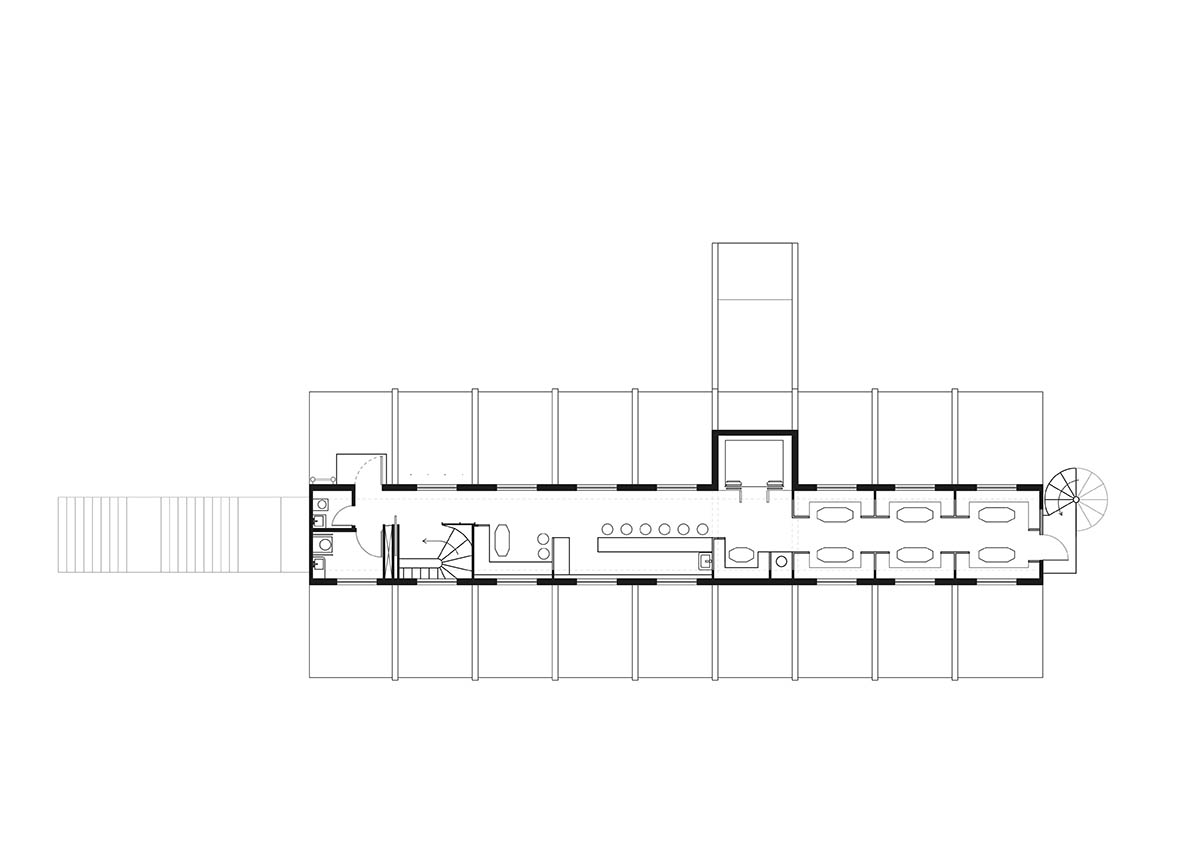
Roof level ‘Tar Bar’. Image © Skene Catling de la Peña
Concrete Spolia
The word ‘spolia’ comes from Latin for ‘spoils’ and describes repurposed building stone for new construction. It continues the ancient, widespread practice where cut stone from a built structure is recycled for use elsewhere.
The AaltoSiilo Research Lab is an opportunity to develop the concept of ‘Concrete Spolia’, where buildings scheduled for demolition are ‘surgically’ dismantled, with large pieces reused in new constructions to beautiful effect.
The structural behaviour of cut-out and reused reinforced, precast, and cast-in-situ concrete is very different to newly formed concrete structures.
The team is working closely with structural engineers to develop a new protocol that addresses the less predictable nature of large-scale, recycled concrete pieces. These will be oversized compared to newly made pieces, contributing to the new aesthetic of the composite architecture that emerges from this technique.
Surgical Demolition
Concrete structures have one of the longest lives of building materials, yet account for an overwhelming majority of demolition projects. Concrete is usually crushed and only used as landfill or aggregate if reused at all.
The reuse of existing buildings (as with the Silo) is preferable to demolition.
An alternative solution lies in salvaging concrete waste, and developing an architectural language that celebrates its re-use. Architectural elements for reuse are identified for ‘surgical’ removal.
Waterjet cutting slices through concrete cleanly and efficiently. The team are working closely with Oulu City identifying buildings to provide the ‘waste’ to construct the new research centre.
The first supply site is a transport hub and school that will be part-demolished in 2023 to make way for the Finnish Housing Fair in 2025.
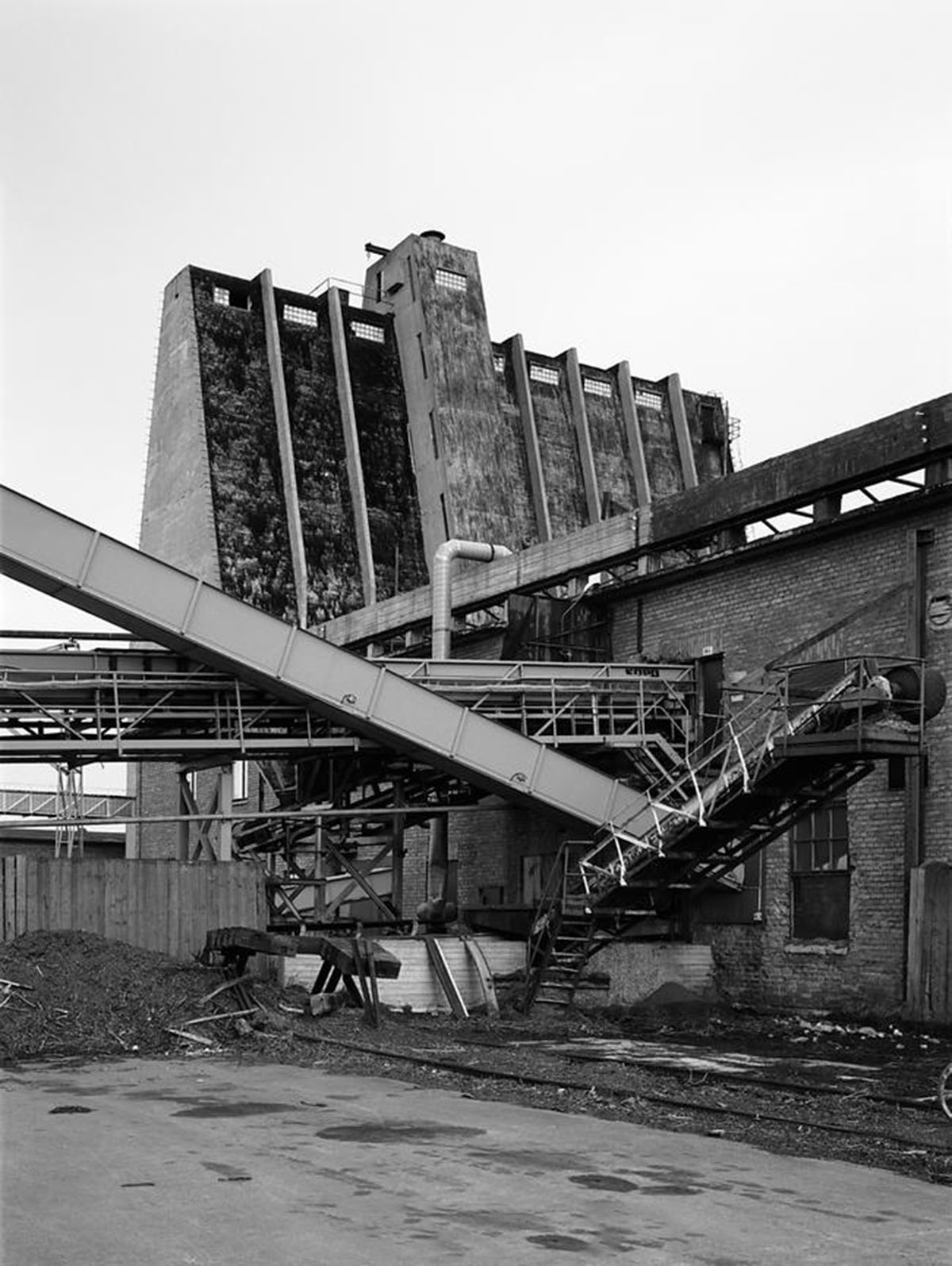
Aaltosiilo, 1980s, shortly after the closure of the Toppila Pulp Mill. Image © Raimo Ahonen
Global Network
The AaltoSiilo Research Centre will focus on the application of technology in the preservation of culture and the environment. The range of activities will include digital technologies, 3D scanning, Machine Learning (AI) and creative software design.
The AaltoSiilo Research Lab will be linked to the other Factum Foundation centres around the world.
These are: ARCHiVe in Venice, ARCHiOX, with the Bodleian Library and Oxford University, Colnaghi-Factum in London, and the Theban Necropolis Preservation Initiative (TNPI) in Luxor, Egypt. In Nigeria a similar programme of empowerment and sharing is underway.
The AaltoSiilo project is based on principles that Factum has developed over the past 21 years: local people must gain, both socially and economically, from sustainable preservation.
Architects Skene Catling de la Peña have a unique approach they call ‘Geoarchaeology’, excavating meaning from the geology of the site and its historical human occupation. The studio's project portfolio includes a variety of typologies and scales in the UK and abroad.
The Factum Foundation for Digital Technology in Preservation is a not-for-profit organisation established by Adam Lowe in Madrid, in 2009.
Top image: The proposed renovations to the AaltoSiilo. Image © Skene Catling de la Peña.
> via Factum Foundation